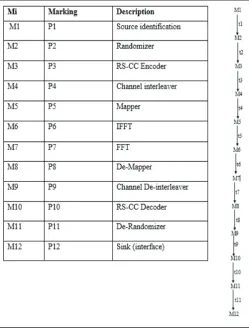Formal Verification of WiMAX Protocol Using Petri Nets
Full text
Figure




Related documents
The key segments in the mattress industry in India are; Natural latex foam, Memory foam, PU foam, Inner spring and Rubberized coir.. Natural Latex mattresses are
All of the participants were faculty members, currently working in a higher education setting, teaching adapted physical activity / education courses and, finally, were
• Speed of weaning: induction requires care, but is relatively quick; subsequent taper is slow • Monitoring: Urinary drug screen, pain behaviors, drug use and seeking,
Goldfish care Planning your aquarium 4-5 Aquarium 6-7 Equipment 8-11 Decorating the aquarium 12-15 Getting started 16-17 Adding fish to the aquarium 18-19 Choosing and
4.1 The Select Committee is asked to consider the proposed development of the Customer Service Function, the recommended service delivery option and the investment required8. It
The PROMs questionnaire used in the national programme, contains several elements; the EQ-5D measure, which forms the basis for all individual procedure
• Follow up with your employer each reporting period to ensure your hours are reported on a regular basis?. • Discuss your progress with
Other readings (not required): Pearson, Neil D., 2002, Risk Budgeting: Portfolio Problem Solving With Value-at-Risk (New York: John Wiley & Sons), Chapters 11, 12, and 13;